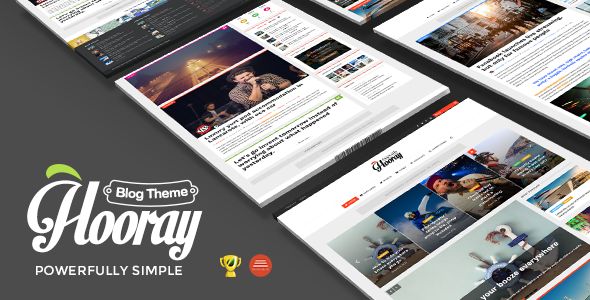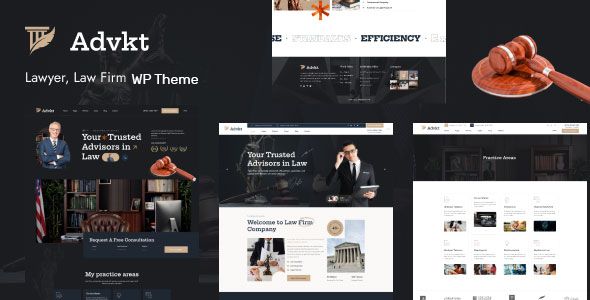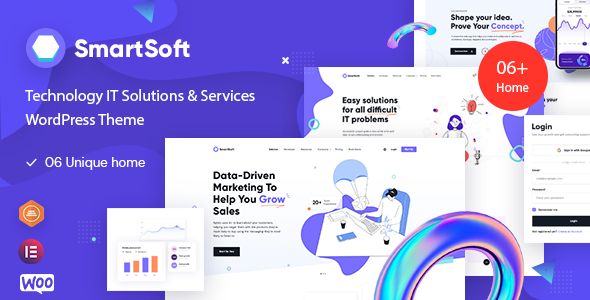Barsi – Architecture & Interior Design WordPress Theme

- Description
- Reviews
- FAQ

Barsi – Architecture & Interior Design WordPress Theme
Install once, deploy anywhere, and keep pace with upstream releases. This edition of Barsi – Architecture & Interior Design WordPress Theme ships with the complete premium experience and a simple, one-time model you can use on unlimited sites—production, staging, client previews, and regional microsites—without activation hoops or feature gates. You keep the full toolkit and the update cadence stays aligned with the official build, so every property remains modern, fast, and consistent.
Why this distribution actually changes your studio’s day-to-day
Architecture and interior practices don’t run just one website. You manage:
-
A flagship studio site for built work
-
Private proposal links and client review pages
-
Competition or concept microsites
-
Regional editions (different offices, languages, or sectors)
-
Recruiting/culture hubs and event pages
Per-domain licensing turns that reality into busywork: someone is hunting for a key, a staging URL won’t activate on a deadline, or a new satellite office needs a quick site next week. With this unlimited, one-time model of Barsi – Architecture & Interior Design WordPress Theme, those frictions disappear. Designers assemble pages, marketers publish case studies, and principals review work—without license logistics sidetracking the team.
The advantage is operational: you can reuse a proven system across a family of properties. Design tokens keep brand consistency, reusable sections accelerate launches, and synchronized updates mean fixes land everywhere at once. The result is momentum—more publishing, better hiring, stronger shortlists, and calmer handoffs.
What Barsi is—and who it’s for
Barsi – Architecture & Interior Design WordPress Theme is a disciplined presentation system built around the way architects and interior designers actually show work: clear grids, quiet typography, generous negative space, and motion that draws the eye without spectacle. It works for:
-
Architecture studios (residential, commercial, institutional, cultural)
-
Interior design firms (hospitality, workplace, retail, high-end residential)
-
Design-build teams and developers presenting mixed-use portfolios
-
Boutique practices pitching competitions and speculative concepts
-
Large practices running multiple offices and sector-specific marketing
Pages feel curated rather than templated. Your drawings, materials, and photography lead; the UI stays invisible. Whether you present a single house or an airport terminal, the rhythm holds: story → evidence → details → contact.
The value of the “unlimited, one-time” approach (without dwelling on jargon)
Let’s translate the licensing advantage into studio outcomes:
-
Unlimited deployments: spin up private client review portals, concept galleries, and competition pages freely.
-
One-time cost: growth doesn’t add overhead per domain; forecast is simple.
-
Complete feature set: no “lite” mode; all sections and options are available immediately.
-
Release parity: refinements and fixes track the reference build so your properties remain aligned.
-
No activation gates: dev/staging/production environments are ready the moment your team is.
The business benefit: faster proposals, cleaner QA, and consistent brand execution across offices and languages.
Design language: architecture-first, not UI-first
Barsi’s visual system is deliberately quiet. It borrows from editorial design—calm type, rational scale, and patient spacing—so light, material, and proportion do the talking.
-
Type system with confident display weights for titles and a readable text face for long captions, specifications, and credits.
-
Grid discipline that keeps drawings, plans, and photographs aligned regardless of aspect ratio.
-
Color tokens (primary, neutrals, accents, states) that hold a restrained palette; CTAs are visible without shouting.
-
Measured motion (transform/opacity only) for hover and reveal; no heavy parallax or jitter that undermines craft.
-
Dark/light variants that preserve contrast for line drawings, wireframes, and floor plans.
The result is credibility. A page reads like a refined monograph, not a sales brochure.
Blocks and templates you’ll actually use
Portfolio & proof
-
Project grid: variable tiles with category chips (residential, hospitality, cultural, workplace), location, and year filters.
-
Case study template: brief → context → concept → program → materials → technical → outcome. Slots for role/partners, gross area, budget band, timeline, and awards.
-
Before/after slider for refurbishments and fit-outs, optimized for keyboard access and preserved aspect ratios.
-
Drawing/diagram gallery with figure numbers, captions, and a modal viewer that doesn’t break the grid.
-
Material boards: swatches with suppliers, finish notes, and sustainability metrics.
Narrative & credibility
-
Hero variants: marquee project, typographic manifesto, or studio reel.
-
Approach/ethos sections: principles (context, daylight, circularity, acoustic comfort, thermal strategy) expressed in concise copy.
-
Client/press wall with restrained logos and optional pull quotes.
-
Awards & recognition grid that doesn’t overwhelm the work.
Commercial clarity
-
Services map: feasibility, concept design, planning, detailed design, procurement, site administration, post-occupancy.
-
Sectors pages: hospitality, multi-res, retail, education, healthcare, civic, industrial—each with drivers and sector-specific case studies.
-
Process timeline that shows phases, approvals, and key deliverables in plain language.
-
RFP / brief intake with timeline expectations, documentation list, and a short form.
Editorial & recruitment
-
Journal/insights: essays, post-occupancy findings, research notes; drop caps and pull quotes behave on mobile.
-
Events (open studios, exhibitions, lectures) with agenda and RSVP.
-
Careers: role cards, growth paths, studio culture, and application forms with portfolio upload.
Every block respects a genuine heading hierarchy and semantic landmarks so search engines and assistive tech understand the outline.
How to structure a high-converting project page
A convincing architecture case study doesn’t drown visitors in images; it stages them.
-
Project header
-
Name, location, type, area, year, stage (built/under construction/concept), and a concise intent statement—one or two sentences, not a manifesto.
-
-
Hero sequence
-
One wide image that establishes proportions and light; follow with two or three complementary angles. Keep initial media weight lean for first paint.
-
-
Context
-
Site plan or aerial with the grain of the neighborhood; a brief note on constraints—orientation, setbacks, heritage, flood, noise.
-
-
Concept & program
-
A diagram or axon clarifying moves: courtyards, cores, circulation loops, sectional strategies. Pair with a short caption.
-
-
Material & envelope
-
Swatches; notes on durability, maintenance, and environmental profile. Reference acoustic or thermal intent in plain language.
-
-
Interior strategy
-
Daylight and sightlines; flexibility and acoustic comfort; key millwork details and finishes.
-
-
Technical notes
-
Structure and MEP in one paragraph each; no tool worship—explain the decision path, not brand names.
-
-
Outcome
-
Post-occupancy metrics when available: energy use intensity band, thermal comfort ranges, wayfinding clarity scores, or even qualitative feedback.
-
-
Credits & collaborators
-
Team roles, consultants, fabricators, and builders. Keep it readable; honor the collaborators without turning the page into a phonebook.
-
-
CTA
-
An invitation matched to the reader: Discuss a brief, Request a capability deck, or Book a studio visit.
This rhythm—story, evidence, detail, invitation—creates trust. Barsi – Architecture & Interior Design WordPress Theme provides that spine so your pages don’t sprawl.
Photography, drawings, and media without performance drama
Architecture sites are media-heavy. Barsi keeps Core Web Vitals in the green:
-
Critical CSS inlined for above-the-fold sections; non-critical scripts defer for faster first paint.
-
Responsive images with size hints and modern formats to keep hero shots crisp without bloat.
-
Font loading strategy that avoids layout shift; a system-stack option yields instant paint where you need it.
-
Animation restraint (transform/opacity only) for smooth scroll on budget devices.
-
Template hygiene that prevents deep DOMs and reflow traps—especially important on gallery pages.
Pair the theme with sensible media practice (consistent aspect ratios, compressed images, short loops for reels) and performance stops being an anxiety.
Accessibility that respects real visitors
Clients, jurors, planners, and students will skim your work on trains and tablets. Barsi bakes in:
-
Readable base sizes and generous line height for spec-heavy captions.
-
Contrast-aware palettes in light and dark contexts, so plans and labels remain legible over photography.
-
Keyboard navigation with visible focus states; modals trap focus; sliders respond to keys.
-
Announced form states so newsletter and careers submissions aren’t guesswork for assistive tech.
-
Alt text discipline: encourage neutral, descriptive language—“north elevation, brick rainscreen, recessed balcony”—not marketing flourish.
Accessibility isn’t a badge; it’s how your future client experiences you.
SEO & information architecture for architecture
Search favors structure and intent clarity. Barsi – Architecture & Interior Design WordPress Theme keeps the bones sound:
-
Semantic headings across all templates—no H3s posing as H2s for style.
-
Schema-friendly areas for articles, FAQs, and organization details.
-
Topic clusters: sectors (e.g., Hospitality) linking to subtopics (guestroom modules, public realm, F&B flow) and relevant projects.
-
Internal linking that mirrors evaluation: Project → Approach → Sector → Team → Contact.
-
Archive pagination & canonicals that avoid thin or duplicate pages.
When your writing is specific and honest, the markup makes it discoverable.
Multi-office, multisite, and brand family rollouts
If you operate multiple studios or sub-brands, the unlimited usage model shines:
-
Design tokens (color, typographic scale, spacing, radii) define the brand across a family of sites; adjust tokens to rebrand safely in minutes.
-
Header/footer presets keep information architecture consistent while switching contact details, languages, or legal copy per locale.
-
Reusable section libraries enable instant rollouts of “Open Studio,” “New Office,” or “Competition Win” pages.
-
Role-based editing lets marketers and architects add content without breaking layout.
No practical caps on domains or subdomains means experimentation—prototype, test, and launch—is routine, not bureaucratic.
A practical build plan (zero to live without detours)
-
Install WordPress on an HTTPS-first host.
-
Activate Barsi – Architecture & Interior Design WordPress Theme; confirm all premium options are available.
-
Set design tokens: brand palette, typographic scale, spacing, and radii; decide light/dark behavior.
-
Import the closest starter (architecture-led, interiors-led, mixed practice).
-
Map navigation to the buyer journey: Work, Sectors, Approach, Studio, Journal, Careers, Contact.
-
Compose the homepage: marquee project → value pillars → selected work → approach → clients/press → CTA.
-
Publish 6–12 projects with consistent case-study structure and believable specifics.
-
Create two sector pages (e.g., Hospitality, Residential) with drivers and relevant proof.
-
Write two cornerstone posts (design approach and a post-occupancy note) and link them from projects.
-
Wire forms to your inbox/CRM; add privacy and response-time notes right beside the submit button.
-
Tune performance: compress images, verify lazy loading, test CLS on long headings.
-
Run accessibility checks: focus states, keyboard flows, alt text, caption contrast.
-
QA on real devices, including budget phones and older tablets.
-
Launch, set analytics goals (brief requests, portfolio downloads, studio visit bookings), and iterate weekly.
Content you can publish this quarter (and keep reusing)
-
Post-occupancy insights: what changed 6 months after handover—daylight, acoustics, energy, wayfinding.
-
Material notes: what you’ve learned about lime plaster longevity, timber movement, terrazzo maintenance, or recycled aluminum.
-
Circulation studies: how you reduced conflict points in a hospitality lobby or workplace core.
-
Budget clarity: ranges by typology with caveats; transparency converts and filters mismatches.
-
Process reveals: your feasibility template, planning checklist, or coordination workflow—edited for confidentiality, useful for trust.
These pieces do double duty as both SEO assets and sales collateral.
Copy principles that make architecture legible
-
Say what changed: “cross-ventilation enabled; corridor daylight factor from ~0.2% to 1.5%,” not “improved wellness.”
-
Anchor claims with timeframe and scale: “fit-out completed in 14 weeks,” “GFA 8,200 m².”
-
Avoid tool worship: explain the design decision, not the software brand.
-
Place caveats near claims: “acoustic performance contingent on tenant partitions” belongs next to the metric, not buried in a policy page.
-
Keep CTAs plain: “Discuss a brief,” “Request a capability deck,” “Book a studio visit.”
Specific, brief, and honest beats ornate every time.
Performance playbook for image- and drawing-heavy pages
-
Use consistent aspect ratios for grids (e.g., 3:2 and 4:3) to minimize reflow.
-
Serve responsive image sizes; avoid dropping 4K photos in card grids.
-
Keep reels short (or use a poster + defer playback).
-
Limit simultaneous animations—sequence reveals in longer pages.
-
Audit long headlines on mobile; line breaks can nudge CLS.
Small habits compound into calm metrics.
Studio operations after launch: a cadence that compounds
-
Weekly merchandising: rotate a homepage project and update one proof strip; the site always feels alive.
-
Monthly essay: one meaningful post (detail deep-dive, planning lesson, post-occupancy observation).
-
Quarterly proof refresh: update awards, add sector case studies, and revise metrics; stale numbers sap credibility.
-
Backlog hygiene: retire orphan pages, redirect experiments, tidy tags and categories.
-
Section library care: refine internal templates for “competition win,” “open role,” and “project teaser.”
Treat the site as a design artifact and as a business tool—because it’s both.
Security posture & maintainability
A theme shouldn’t be an attack surface or a maintenance burden. This build keeps to presentation:
-
Clean, auditable templates; no obfuscated bundles or eval tricks.
-
Child-theme strategy for CSS/PHP tweaks so updates land without overwriting brand layers.
-
Compatibility with common hardening (WAF/CDN, rate limits, backups).
-
Predictable release cadence that stays aligned with the reference, so patching is routine.
You bring hosting discipline and backups; Barsi stays out of your way.
How agencies and multi-brand studios benefit
-
Blueprint once, launch repeatedly: token swaps and reusable blocks mean new properties ship in hours, not weeks.
-
Fleet updates land together because every site tracks the same baseline.
-
Editors publish within guardrails; designers keep system integrity; developers focus on higher-leverage improvements.
-
Budgets are predictable: no per-domain surprises when your portfolio grows.
Your advantage is momentum; this distribution protects it.
Frequently asked questions
Q: What do I practically gain from this unlimited, one-time edition of Barsi – Architecture & Interior Design WordPress Theme?
You can deploy the full premium theme on as many sites as you need—dev, staging, production, client previews, regional editions—without per-domain activations. The toolkit is complete from day one, and updates track the official build so functionality, compatibility, and security stay aligned.
Q: Are updates synchronized with the official release?
Yes. Release cadence mirrors the reference version, so you receive refinements and fixes promptly. Apply updates on a staging site first and then promote to production for smooth rollouts.
Q: Will my custom styling survive updates?
Keep CSS/PHP overrides in a child theme and save frequently used sections (hero, proof, project intro, CTA) to your library. Updates touch the foundation while leaving your brand layer intact.
Q: Is the feature set limited compared to the reference build?
No. All sections, templates, and options are available. You’re not working in a reduced or “trial” experience.
Q: Can I run multiple locales or office sites on the same foundation?
Absolutely. Token sets and header/footer presets make regionalization straightforward. There’s no practical cap on domains or subdomains.
Q: How does the theme handle heavy imagery, drawings, and reels?
It’s engineered for Core Web Vitals: critical CSS, responsive media, careful font loading, and restrained motion. Combine with caching and compressed assets to keep LCP/CLS/TBT stable—even on gallery pages.
Q: Does Barsi support accessibility out of the box?
Yes. Contrast-aware palettes, keyboard navigation, semantic HTML, and announced form states are defaults. Provide descriptive alt text and clear labels to complete the picture.
Q: Can we share private, client-only pages?
Yes. Use the same case study and gallery components with private visibility. The structure stays consistent; access is your choice.
Q: How should we present budgets without boxing ourselves in?
Use range cards tied to typology and size bands with candid caveats. Place an invitation to discuss scope beside the ranges and an inline FAQ beneath.
Q: Is e-commerce or deposit taking possible?
As a presentation layer, yes—pair with your preferred plugin if you need to sell monographs, tickets, or accept consultation deposits. The theme provides the cohesive UI.
Q: Any limit on staging URLs or prototypes for competitions?
No. Spin up as many sandboxes and private links as your workflow requires—without license friction.
Closing perspective
Barsi – Architecture & Interior Design WordPress Theme is built to showcase architecture with clarity and respect: measured type, disciplined grids, and image handling that flatters your work without slowing the reader. The unlimited-site, one-time model removes operational friction so you can publish more confidently—proposal portals, competition showcases, regional editions, and hiring pages—while staying aligned with the official release for stability and security. Build once, learn once, and reuse the same refined system across your studio’s entire web presence.
Q: Do I need a license key?
A: No. All products are Pre-Activated. You can use 100% of the Premium features immediately.
Q: Can I use the One-Click Demo Import?
A: Yes, absolutely! We ensure the demo import feature works perfectly.
Q: Can I use the products on multiple websites?
A: Absolutely. The GPL license allows use on unlimited domains.
Q: Are the files safe?
A: Yes. All files are scanned by McAfee and VirusTotal before uploading.
Share Now!

















